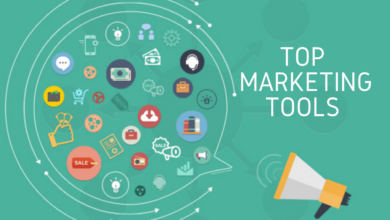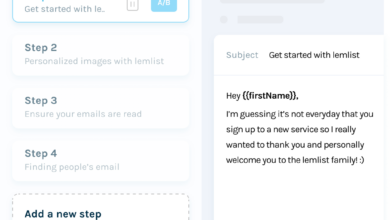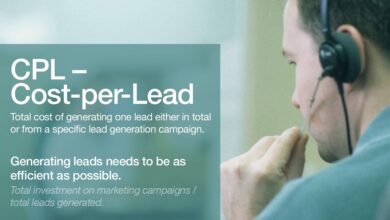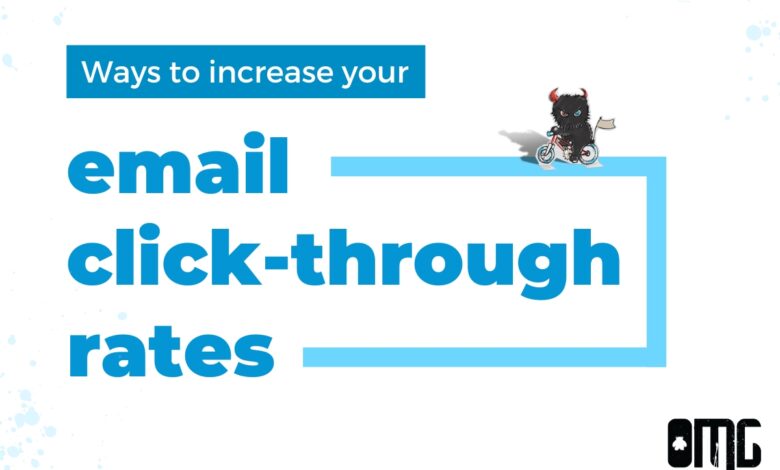
Boost Email Conversions Proven Strategies
How to increase email conversion rates is a crucial aspect of modern marketing. This comprehensive guide dives deep into proven strategies to maximize your email campaigns. From crafting compelling subject lines to optimizing landing pages, we’ll cover every element for a successful conversion journey.
Unlocking higher open rates, click-throughs, and ultimately, conversions requires a multi-faceted approach. We’ll explore the essential components, from the initial email design to the final call to action, and equip you with actionable techniques.
Email Subject Lines
Crafting compelling email subject lines is paramount to boosting open rates and ultimately, conversions. A captivating subject line acts as the first impression, enticing recipients to delve into the email’s content. It’s a crucial element in the email marketing strategy, often the deciding factor between a read and a deleted inbox. Ignoring this aspect can significantly diminish your email marketing efforts.Effective subject lines are concise, intriguing, and relevant to the recipient’s interests.
They clearly communicate the email’s value proposition, prompting recipients to open and engage. By understanding the different approaches and tailoring them to your audience, you can dramatically improve your email marketing performance.
Subject Line Styles and Their Impact
Subject lines can be categorized into various styles, each with its potential to influence open rates. Understanding these styles allows for a more strategic approach to crafting impactful subject lines.
| Subject Line Style | Description | Potential Impact on Open Rates | Example |
|---|---|---|---|
| Curiosity-Driven | These subject lines pique the recipient’s interest by posing a question or hinting at something intriguing. | High potential for generating curiosity and encouraging opens, especially if the subject line is relevant to the recipient’s interests. | “Did you know this secret to [product/service]?” |
| Benefit-Driven | These subject lines highlight the advantages or value proposition of the email’s content. | Can be highly effective in showcasing the immediate value for the recipient, leading to a higher open rate. | “Save 20% on your next order!” |
| Question-Based | These subject lines ask a question directly related to the email’s content. | Can generate intrigue and encourage recipients to open the email to find the answer. | “Have you tried [product/service] yet?” |
| Direct and Action-Oriented | These subject lines are straightforward and motivate the recipient to take immediate action. | Excellent for promoting time-sensitive offers or urgent announcements, resulting in high open rates. | “Claim your exclusive discount now!” |
Personalization in Subject Lines
Personalization significantly enhances email effectiveness. By tailoring subject lines to individual recipient characteristics, you create a more personalized experience, improving engagement.Personalization in subject lines involves incorporating recipient-specific information, like their name, location, or past interactions with your brand. This creates a more relevant and engaging communication, making the email feel tailored to the recipient. For example, using a recipient’s name in the subject line instantly establishes a personal connection.
A/B Testing Subject Lines
A/B testing different subject lines is crucial for optimizing email performance. This process involves sending variations of a subject line to different segments of your audience to determine which performs best.A/B testing involves creating multiple versions of a subject line and randomly sending them to different segments of your audience. The variation with the highest open rate is then used in subsequent campaigns.
Tracking metrics such as open rates, click-through rates, and conversions is essential to assess the effectiveness of each variation. Using email marketing platforms, you can easily set up and analyze A/B tests, identifying the most impactful subject line.
Boosting email open rates is crucial for any marketer, and there are plenty of tried-and-true methods for improving conversion rates. However, with the recent breaking news about how a changing average Google CTR could potentially reshape SEO strategies breaking news average google ctr could change seo , it’s vital to adapt. Ultimately, understanding these shifting dynamics will help refine your email marketing strategy for maximum impact.
Email Content Optimization
Crafting compelling email content is crucial for driving conversions. Beyond a captivating subject line, the body of your email must resonate with your audience, encouraging them to take the desired action. This involves a blend of concise language, a well-structured layout, and strategically placed calls to action. Effective email content optimization is key to transforming passive recipients into engaged customers.Email content isn’t just about words; it’s about delivering the right message to the right person at the right time.
Boosting email conversion rates is all about optimizing your approach. A key part of that is understanding how Google’s changes affect your strategies. For instance, the recent news about Google shutting down its structured data testing tool ( breaking news google shuts down structured data testing tool ) means marketers need to adapt. This necessitates exploring alternative methods for improving click-through rates and ultimately, conversions.
Luckily, plenty of strategies exist for a successful email campaign.
Optimizing your email content requires a deep understanding of your target audience, their needs, and the value proposition you offer. By meticulously considering these factors, you can create emails that are not only informative but also inspiring and actionable.
Writing Concise and Engaging Content
Concise and engaging email content grabs attention and drives action. Avoid jargon and overly technical language. Use clear, concise language that resonates with your target audience. Break down complex information into easily digestible chunks. Use bullet points, numbered lists, and short paragraphs to improve readability.
Emphasize the value proposition of your offer and how it addresses your audience’s pain points.
Structuring Emails for Readability
Email structure plays a critical role in how recipients perceive and process your message. Use a clear and consistent layout, with a logical flow of information. A well-structured email makes it easier for recipients to find the key information quickly and act upon it. Headings, subheadings, and bullet points enhance readability, making the email more visually appealing and scannable.
Use white space effectively to avoid overwhelming the reader.
Key Elements for Optimal Conversion Rates
Several key elements are vital for maximizing email conversion rates. These include a compelling introduction, a clear value proposition, and a strong call to action (CTA). Include a brief, attention-grabbing introduction to hook the reader. Clearly state the value your product or service offers. Craft a concise and persuasive CTA that guides the recipient towards the desired action, whether it’s making a purchase, signing up for a webinar, or downloading a resource.
Importance of Clarity, Conciseness, and Strong Calls to Action
| Element | Importance |
|---|---|
| Clarity | Crucial for understanding. Unclear messages lead to confusion and inaction. |
| Conciseness | Essential for engagement. Short, impactful content is more likely to be read and acted upon. |
| Strong Calls to Action | Guide the reader towards the desired action. Vague or weak CTAs result in missed opportunities. |
Incorporating Visuals Effectively
Visuals can significantly enhance email engagement. High-quality images, infographics, and videos can break up text, add visual interest, and convey information more effectively. Use relevant visuals that align with your brand and the message you’re conveying. Optimize images for fast loading times to prevent hindering the user experience. Ensure images are appropriately sized and formatted to fit different email clients.
Call-to-Action (CTA) Optimization

Crafting compelling calls to action is crucial for driving email conversions. A well-designed CTA encourages recipients to take the desired action, whether it’s making a purchase, downloading a resource, or signing up for a newsletter. A poorly designed CTA, on the other hand, can lead to missed opportunities and lost revenue. This section delves into optimizing CTAs for maximum impact.Effective CTAs are more than just words; they’re strategically placed and designed to capture attention and motivate clicks.
Understanding the psychology of persuasion and applying it to email design is key to achieving higher conversion rates. This includes not just the text of the CTA, but also its visual presentation and placement within the email.
CTA Button Design and Effectiveness
A well-designed button stands out and is visually appealing. It should be easily distinguishable from the surrounding email content. Color choice is important. Contrasting colors create visual interest and make the button more noticeable. Use a color that aligns with your brand and resonates with your target audience.
Shape also plays a role. Rectangular buttons are common and effective, but rounded buttons can add a touch of modernity. Font choice and size should complement the overall email design. A clear and concise font, in a size large enough to be easily readable, is crucial. Consider using a call-to-action-specific font to enhance recognition.
CTA Link Design and Effectiveness
Links are often used in conjunction with buttons or as standalone CTAs. The text of the link should clearly communicate the desired action. Avoid generic phrasing. Instead of “Click here,” use action-oriented phrases such as “Download Now,” “Learn More,” or “Get Started.” The link should be visually distinct, either through underlined text or a different color, so it’s easily identifiable.
CTA Placement and Impact
The location of the CTA within the email significantly impacts its effectiveness. Placing the CTA at the top of the email immediately draws attention. Placement in the middle or near the end of the email can also be effective, depending on the content and structure of the email. Testing different placements to identify the optimal location is highly recommended.
For instance, if your email promotes a product, placing the CTA at the beginning, alongside the product image, can yield higher click-through rates.
Importance of Clear and Concise Language in CTAs
Using clear and concise language in your CTAs is essential. Avoid jargon or overly complex phrasing that might confuse or deter recipients. Recipients should instantly understand the desired action. Use active voice verbs and keep the language straightforward. For example, instead of “Click to access the free guide,” use “Download Your Free Guide Now.”
Best Practices for Crafting Effective CTAs
| Aspect | Best Practice | Example |
|---|---|---|
| Button Color | Use high contrast colors that stand out. | A bright orange button on a white background. |
| Button Text | Use action-oriented verbs. | “Sign Up Free” instead of “Register.” |
| Link Text | Be clear and descriptive. | “Learn More About Our Services” instead of “Read More.” |
| Placement | Test different locations within the email. | Experiment with placing the CTA at the top, middle, or bottom. |
| Language | Use simple and concise language. | “Get Your Discount Now” instead of “Claim your promotional offer.” |
List Segmentation and Targeting
Email marketing is more effective when you tailor your messages to specific groups of subscribers. Understanding your audience’s needs and behaviors allows you to craft emails that resonate with individual preferences, leading to higher engagement and conversion rates. This targeted approach fosters stronger customer relationships and ultimately drives business growth.Effective segmentation goes beyond simply categorizing subscribers. It’s about understanding their motivations, purchasing habits, and engagement levels to deliver personalized content.
This refined approach cultivates a stronger connection with your audience, ultimately leading to increased conversion rates.
Importance of Segmenting Email Lists, How to increase email conversion rates
Segmentation is crucial because a one-size-fits-all approach rarely yields optimal results. Generic emails often fall flat, failing to address the unique needs and interests of individual subscribers. By segmenting your list, you can send highly relevant content that speaks directly to specific customer groups. This targeted approach significantly increases the likelihood of engagement and conversion.
Methods for Effective List Segmentation
Various methods can be used to segment your email list effectively. These include:
- Demographics: Segmenting by factors like age, location, gender, or profession allows for tailored messaging based on common characteristics. For example, a fashion retailer could send different email campaigns to customers in various age groups, highlighting different product categories.
- Purchase History: Analyzing past purchases reveals valuable insights into customer preferences and needs. A book retailer could segment customers by genre preferences to recommend new titles.
- Engagement Levels: Monitoring open rates, click-through rates, and website activity helps identify engaged subscribers who are more likely to convert. This allows you to tailor messages to nurture leads who show active interest.
- Website Behavior: Tracking website interactions like page views, product searches, and time spent on specific pages provides valuable data about customer interest. An online course provider could segment users based on the specific courses they’ve viewed or added to their cart.
- Lead Scoring: Assigning scores based on various criteria allows you to prioritize leads and tailor nurturing sequences. A software company can segment leads based on the number of times they’ve downloaded resources or engaged with their demos.
Tailoring Email Content to Specific Segments
Tailoring content is vital for higher conversion rates. Personalized subject lines, body copy, and calls to action are crucial for engaging individual segments.
- Subject Lines: Use subject lines that resonate with specific segments, reflecting their interests and needs. For example, a segment interested in a particular product category could receive a subject line focused on that category.
- Body Copy: Craft email content relevant to each segment’s interests. Avoid generic messaging; instead, focus on providing value directly related to their needs.
- Call-to-Action (CTA): Tailor CTAs to match each segment’s goals. If a segment is interested in a particular product, the CTA should direct them to that product.
Using Data to Inform List Segmentation Decisions
Data analysis is key to making informed segmentation decisions. Regularly analyzing open rates, click-through rates, conversion rates, and other metrics helps refine your segmentation strategies.
Data-driven decisions are crucial for optimizing email marketing campaigns and achieving higher conversion rates.
By understanding customer behavior and preferences, you can create targeted email campaigns that resonate with specific segments, driving increased conversions and stronger customer relationships.
Benefits of Personalized Email Campaigns
Personalized email campaigns significantly enhance conversion rates. They increase engagement, build stronger customer relationships, and ultimately drive sales.
- Increased Engagement: Tailored messages are more likely to capture attention and foster interaction.
- Improved Conversion Rates: Relevant content and targeted offers lead to higher conversion rates.
- Enhanced Customer Relationships: Personalized communication builds trust and strengthens customer loyalty.
Landing Page Optimization: How To Increase Email Conversion Rates
Your email marketing campaigns are a powerful tool, but they often lead to a critical juncture: a landing page. A well-optimized landing page acts as the destination for those who click on your email links. It’s the place where prospects transform into customers. A poorly designed landing page can diminish your email marketing efforts, frustrating users and driving them away.
Conversely, a compelling landing page enhances your email campaigns, turning clicks into conversions.Landing pages are not just static web pages; they are strategically designed to capture leads and guide users towards a desired action, like purchasing a product or signing up for a newsletter. Their role in email conversion rates is paramount, acting as the final step in the customer journey initiated by your email.
Effective landing page optimization ensures that the journey is seamless and successful.
Impact on Email Conversion Rates
Landing pages directly influence email conversion rates. If your landing page isn’t aligned with your email’s message, it disrupts the user experience, leading to confusion and decreased conversions. A strong landing page reinforces the value proposition presented in your email, providing further context and compelling reasons to take the desired action. The seamless transition from email to landing page is crucial for maintaining user engagement and maximizing conversions.
Strategies for Optimizing Landing Pages
Optimizing landing pages for higher conversions requires a multi-faceted approach. First, ensure the landing page aligns perfectly with the email’s subject line and content. Clear, concise messaging, emphasizing the value proposition, is essential. Next, make the page visually appealing, easy to navigate, and mobile-responsive. Ensure fast loading speeds, as slow loading pages deter users.
A well-structured layout, with clear call-to-actions (CTAs), is vital. Finally, use compelling visuals and concise copy to grab attention and guide users towards conversion. A/B testing various elements of your landing page, like headlines, CTAs, and visuals, can provide valuable insights and optimize performance.
Integrating Landing Pages with Email Campaigns
Integration between email campaigns and landing pages is crucial for maximizing conversions. A common strategy is to create unique landing pages for each email campaign. This ensures a targeted and personalized experience for each user segment. For example, an email promoting a new product line could direct users to a dedicated landing page showcasing the new offerings.
The email content should clearly communicate the benefits of visiting the landing page, while the landing page itself should reinforce the messaging and offer a seamless transition. Use tracking mechanisms to monitor the performance of each email-landing page pair.
Aligning Email Content with Landing Page Messaging
A critical aspect of optimizing email and landing page performance is aligning their messaging. Inconsistency in messaging creates confusion and can deter users from converting. Your email should clearly preview the information and value proposition that users will find on the landing page. Ensure that the language, tone, and value propositions align seamlessly between the email and the landing page.
For instance, an email highlighting a discount code should have a landing page that prominently displays this discount.
Email Marketing and Landing Page Performance Relationship
| Email Marketing Aspect | Landing Page Impact | Example |
|---|---|---|
| Clear subject line | High click-through rates from emails | Subject: Exclusive Offer – 20% Off |
| Compelling email content | Increased landing page visits | Email details new product features and benefits |
| Strong Call-to-Action (CTA) | Higher conversion rates | CTA: Shop Now |
| Aligned messaging | Reduced bounce rates | Landing page mirrors email’s discount offer |
| Mobile-friendly design | Improved user experience | Landing page is responsive on all devices |
Email Frequency and Timing
Email frequency and timing are critical factors in achieving high email conversion rates. Sending emails at the right frequency and time can significantly boost engagement and drive conversions. Conversely, poor timing and excessive emails can lead to subscriber fatigue and unsubscribes. A well-crafted email strategy considers both the needs of the sender and the expectations of the recipient.
Optimal Email Frequency for Each Segment
Understanding your audience’s preferences and behaviors is paramount. Different segments will respond differently to email frequency. A segment of customers actively engaged with your product might appreciate more frequent updates, while a segment focused on specific product research might prefer less frequent, more targeted emails. The key is to tailor your approach to each segment.
- High-value customers: These individuals are likely already engaged and are more receptive to more frequent emails. High-value customers can receive emails that promote new products, exclusive offers, or special events related to their previous purchases or engagement.
- New subscribers: A more cautious approach is crucial for new subscribers. Start with a lower frequency, introducing yourself and your brand. Initial emails could include welcome messages, product introductions, and general company updates. Gradual increases in frequency can be considered as the subscriber engages further.
- Lead nurturing: Lead nurturing emails are crucial in converting leads into paying customers. These emails should focus on the customer journey, guiding them towards purchase. Frequency here should be determined by the lead’s behavior and the stage of the sales funnel.
Importance of Sending Emails at the Right Time
Timing is everything. Sending emails when recipients are most likely to open and engage is critical. This depends on factors like time zone, industry, and individual user behavior.
- Analyze Open and Click-Through Rates: Data on when your subscribers are most active is key. Use email marketing platform analytics to identify peak engagement times. This is crucial for optimizing sending schedules.
- Consider Time Zones and Demographics: Emails sent to recipients in different time zones should be timed appropriately to ensure they receive them at a relevant time.
- Segment by Behavior: If possible, segment subscribers based on their email opening and clicking behavior. This allows for targeted emails at the most opportune moments for individual users.
Impact of Email Frequency on Subscriber Engagement and Conversion Rates
High email frequency can lead to subscriber fatigue and decreased engagement. Too few emails, however, might not keep the customer engaged. Finding the right balance is essential.
- Engagement: A well-timed and strategically-segmented email frequency fosters engagement. Excessive emails can lead to frustration and decreased response rates.
- Conversion Rates: A balanced approach, tailored to specific segments, can increase conversion rates. By understanding each segment’s needs, you can provide them with information at the right moment, ultimately increasing the likelihood of conversion.
Email Scheduling Strategies for Different Segments
Crafting a strategy that addresses each segment’s unique needs is essential.
Boosting email conversion rates is all about understanding your audience. A great way to do this is by targeting the right demographics on platforms like Facebook. Consider how you can tailor your approach for international audiences, and leverage resources like international Facebook global pages to find the best practices for localization. Ultimately, the key to successful email marketing lies in a well-rounded strategy that considers cultural nuances and optimized messaging.
- Promotional emails: These emails should be sent at times when your subscribers are most likely to make purchases, like during peak shopping hours or special promotional events.
- Nurturing emails: These emails should be sent at intervals that align with the subscriber’s journey, providing them with helpful content and support at appropriate stages.
Email Scheduling Tools and Their Functionalities
Various tools help streamline email scheduling and optimization.
| Tool | Functionality |
|---|---|
| Mailchimp | Comprehensive platform with automation features, segmentation options, and A/B testing capabilities. |
| Campaign Monitor | Offers detailed analytics, automated workflows, and customizable templates. |
| Sendinblue | Provides features for email marketing, SMS marketing, and CRM, supporting automation and segmentation. |
Email Design and Responsiveness
Email design is no longer a static affair. Modern email marketing demands a flexible, responsive approach to ensure optimal viewing across various devices. This shift from desktop-centric design to mobile-first thinking is crucial for maximizing engagement and driving conversions. A poorly designed email that doesn’t adapt to different screen sizes can lead to a frustrating user experience, ultimately diminishing your campaign’s impact.Email design is not just about aesthetics; it’s about usability and deliverability.
Responsive design, coupled with optimized images and clear calls-to-action, leads to a more engaging and effective communication strategy. Focusing on mobile-first principles ensures that your emails are accessible and easily digestible on smartphones and tablets. This translates directly to higher open rates, click-through rates, and ultimately, better conversion rates.
Responsive Email Designs
Emails should adapt seamlessly to various screen sizes, from the large displays of desktops to the compact screens of mobile phones. A responsive design utilizes fluid layouts, flexible images, and adaptable typography to ensure a consistent experience across all devices. This involves using media queries in your email code to adjust the layout, image sizes, and font sizes based on the device’s screen width.
Importance of Mobile Optimization
Mobile optimization is no longer a luxury but a necessity in today’s email marketing landscape. A significant portion of email opens and clicks now originate from mobile devices. Emails that are not optimized for mobile often appear cramped, distorted, or difficult to navigate on smaller screens. This leads to a poor user experience and can negatively impact your conversion rates.
Mobile optimization is essential to deliver a seamless experience for all users.
Improving Email Deliverability
Deliverability is the ability of your emails to reach the intended recipients’ inboxes. Poor deliverability can stem from various factors, including sending frequency, sender reputation, and email design. Using best practices like avoiding spam triggers, ensuring accurate sender information, and employing a reliable email service provider (ESP) can improve your email deliverability.
Impact of Design Elements
The design elements of your email, including fonts, colors, and images, play a crucial role in influencing user engagement and conversion rates. Choosing the right fonts and colors creates a brand identity and can improve readability. High-quality images, when used appropriately, can enhance visual appeal and convey information effectively. However, excessive use of images or poor image optimization can negatively impact load times and deliverability.
Technical Requirements for Responsive Email Templates
The following table Artikels the technical requirements for creating responsive email templates. Proper adherence to these guidelines ensures compatibility across various email clients and devices.
| Requirement | Description |
|---|---|
| Fluid Layouts | Employ flexible widths and responsive grids to adapt to different screen sizes. |
| Flexible Images | Use responsive image tags to automatically adjust image sizes to fit the screen. |
| Media Queries | Implement CSS media queries to style elements differently based on screen width and device type. |
| Mobile-First Approach | Prioritize mobile layout and design to ensure optimal viewing on smaller screens. |
| Testing Across Devices | Thoroughly test the email on various devices (desktops, tablets, and smartphones) to identify and fix any layout issues. |
A/B Testing and Analysis
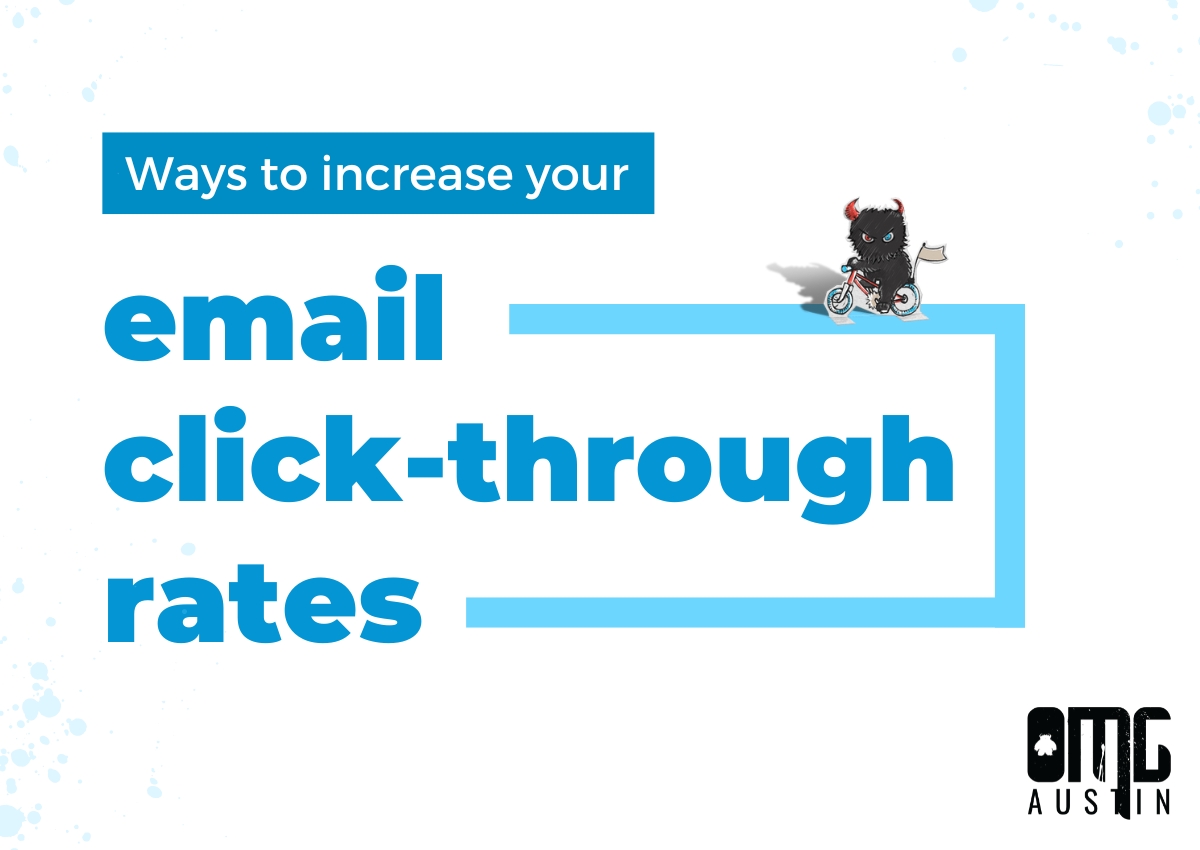
Unlocking the secrets of email campaign optimization often hinges on a robust understanding of A/B testing. This powerful technique allows you to systematically compare different versions of your emails to identify which elements resonate most strongly with your audience, ultimately leading to higher conversion rates. By meticulously analyzing the results, you can fine-tune your approach and craft emails that effectively drive desired actions.A/B testing isn’t just about random experimentation; it’s a structured process that leverages data-driven insights to optimize your email campaigns.
The key lies in rigorous analysis of the results, which helps you discern patterns and identify the most effective strategies.
Implementing A/B Testing for Email Campaigns
A/B testing for email campaigns involves creating variations of your emails. These variations, or “variants,” can target different aspects of your email, such as subject lines, email body content, calls-to-action, or even email design elements. You then send these variants to different segments of your email list, tracking which variant performs better.
Analyzing A/B Test Results for Optimizing Campaigns
Thorough analysis of A/B test results is crucial for campaign optimization. By tracking key metrics, you can identify areas for improvement and refine your strategies. Metrics should be specific and actionable.
Metrics to Track for Email Campaign Performance
Several metrics can provide insights into your email campaign’s effectiveness. These include open rates, click-through rates, conversion rates, and bounce rates. Analyzing these metrics together provides a comprehensive view of campaign performance.
- Open Rate: The percentage of recipients who opened your email. High open rates often indicate a well-crafted subject line that piqued recipients’ interest. A low open rate might suggest a need to re-evaluate your subject line strategy.
- Click-Through Rate (CTR): The percentage of recipients who clicked on a link within your email. A high CTR indicates that your email content is engaging and effectively guides recipients towards the desired action.
- Conversion Rate: The percentage of recipients who completed the desired action, such as making a purchase or filling out a form. Conversion rate directly measures the effectiveness of your call-to-action and overall campaign goals.
- Bounce Rate: The percentage of emails that couldn’t be delivered. A high bounce rate could indicate issues with your email list, like invalid email addresses or spam filters.
Interpreting A/B Test Results and Identifying Areas for Improvement
Careful interpretation of A/B test results is essential to identify areas needing improvement. For example, if variant A has a higher open rate than variant B, it suggests that the subject line of variant A is more compelling. The difference in metrics between variants provides actionable insights.
Using A/B Testing Data to Optimize Email Conversion Rates
By consistently implementing A/B testing and analyzing the results, you can continuously optimize your email campaigns. This iterative approach ensures your emails resonate with your audience, leading to higher conversion rates over time. This optimization can be applied across all aspects of the email, from subject lines to design. It is crucial to identify which aspects of the email contribute to the most significant improvements.
Final Wrap-Up
In conclusion, increasing email conversion rates isn’t a one-size-fits-all solution. By strategically employing techniques like targeted list segmentation, compelling CTAs, and optimized landing pages, you can elevate your email marketing to new heights. Remember to constantly A/B test and analyze results to refine your approach and maximize your return on investment.
